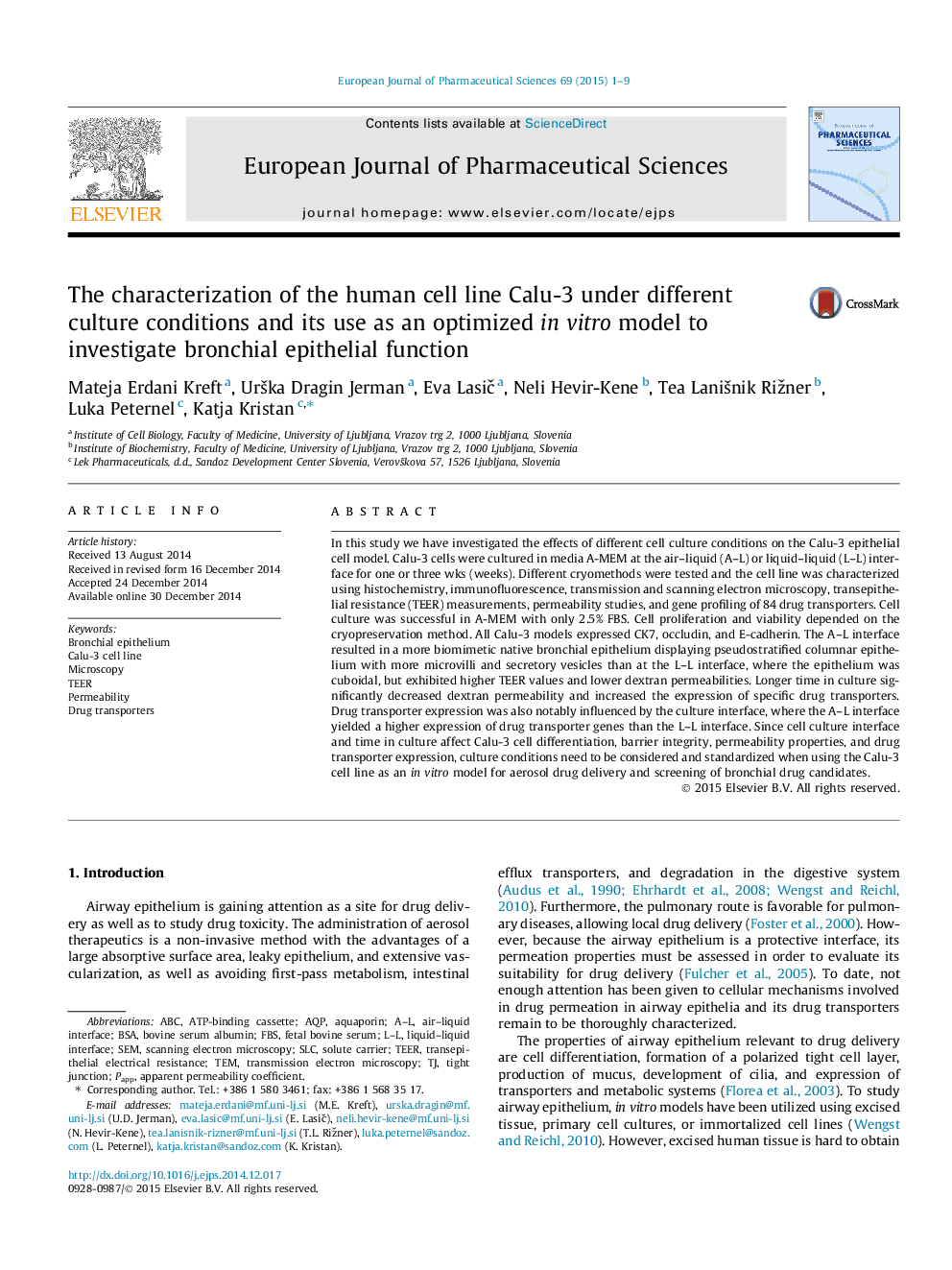| Article ID | Journal | Published Year | Pages | File Type |
|---|---|---|---|---|
| 2480363 | European Journal of Pharmaceutical Sciences | 2015 | 9 Pages |
In this study we have investigated the effects of different cell culture conditions on the Calu-3 epithelial cell model. Calu-3 cells were cultured in media A-MEM at the air–liquid (A–L) or liquid–liquid (L–L) interface for one or three wks (weeks). Different cryomethods were tested and the cell line was characterized using histochemistry, immunofluorescence, transmission and scanning electron microscopy, transepithelial resistance (TEER) measurements, permeability studies, and gene profiling of 84 drug transporters. Cell culture was successful in A-MEM with only 2.5% FBS. Cell proliferation and viability depended on the cryopreservation method. All Calu-3 models expressed CK7, occludin, and E-cadherin. The A–L interface resulted in a more biomimetic native bronchial epithelium displaying pseudostratified columnar epithelium with more microvilli and secretory vesicles than at the L–L interface, where the epithelium was cuboidal, but exhibited higher TEER values and lower dextran permeabilities. Longer time in culture significantly decreased dextran permeability and increased the expression of specific drug transporters. Drug transporter expression was also notably influenced by the culture interface, where the A–L interface yielded a higher expression of drug transporter genes than the L–L interface. Since cell culture interface and time in culture affect Calu-3 cell differentiation, barrier integrity, permeability properties, and drug transporter expression, culture conditions need to be considered and standardized when using the Calu-3 cell line as an in vitro model for aerosol drug delivery and screening of bronchial drug candidates.
Graphical abstractFigure optionsDownload full-size imageDownload high-quality image (252 K)Download as PowerPoint slide
